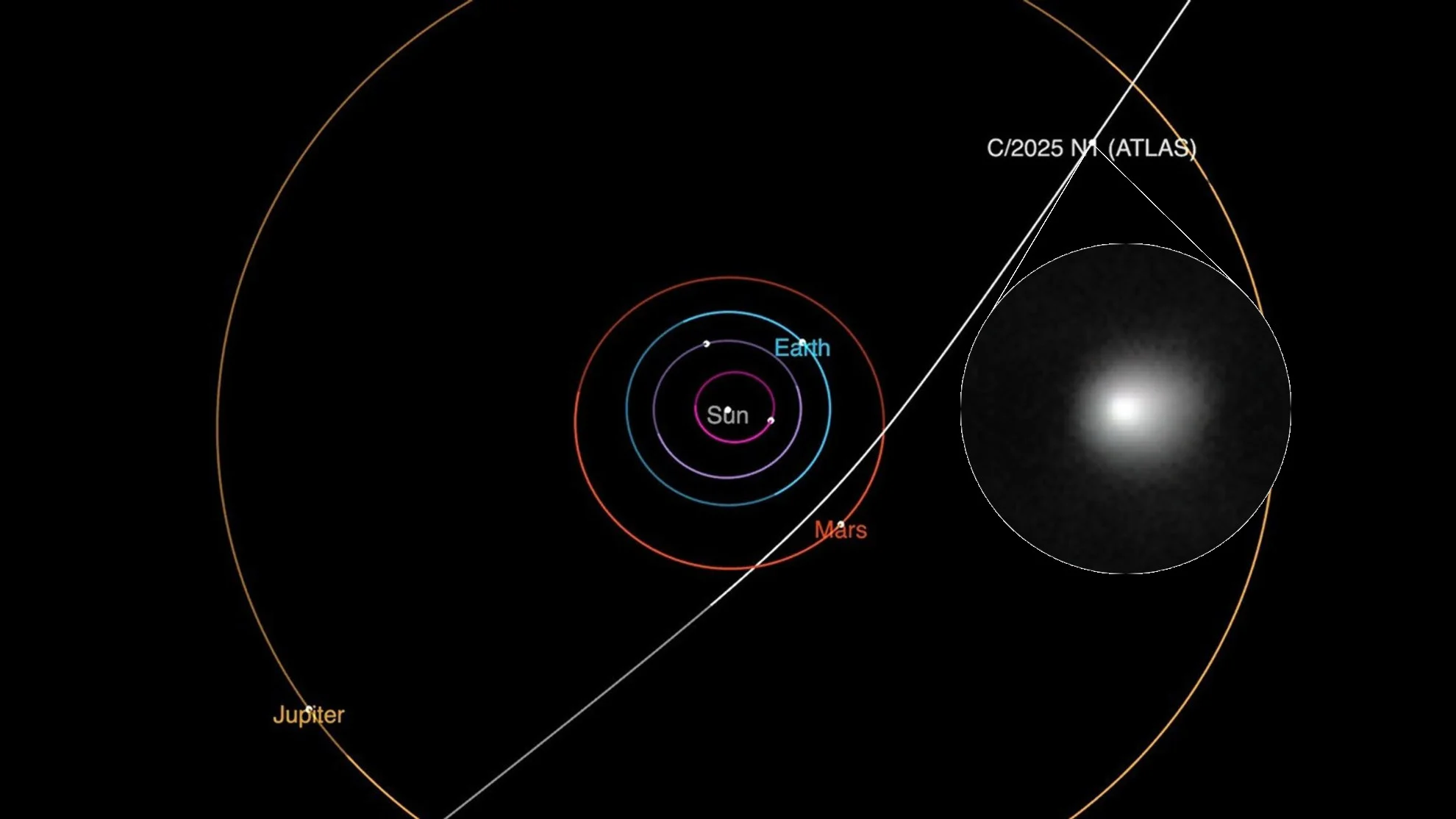
An alien comet is now passing through our solar system. Here's what we know
Comet 3I/ATLAS appears to be unlike anything we've seen from interstellar space so far!
Telescopes around the world are now tracking a new visitor to our celestial neighborhood. Streaking through at a speed and trajectory that not even the Sun's immense gravity can capture, we will only have a short time — perhaps until the end of 2025 or early 2026 — to learn everything we can from alien comet 3I/ATLAS.
On July 1, 2025, the Asteroid Terrestrial-impact Last Alert System (ATLAS) survey telescope, located in northern Chile, spotted a new object just inside the orbit of Jupiter. ATLAS scans the sky every night looking for any new comets or asteroids, with specific interest in anything that could be on a collision course with Earth.
However, this new object, initially named A11pl3Z, caught astronomers' attention for a completely different reason.
Its trajectory wouldn't bring it anywhere near Earth. In fact, the closest it will come to us is just inside the orbit of Mars, at a distance of around 240 million kilometers away. For context, that's 90 million kilometres farther than the distance between the Earth and the Sun!
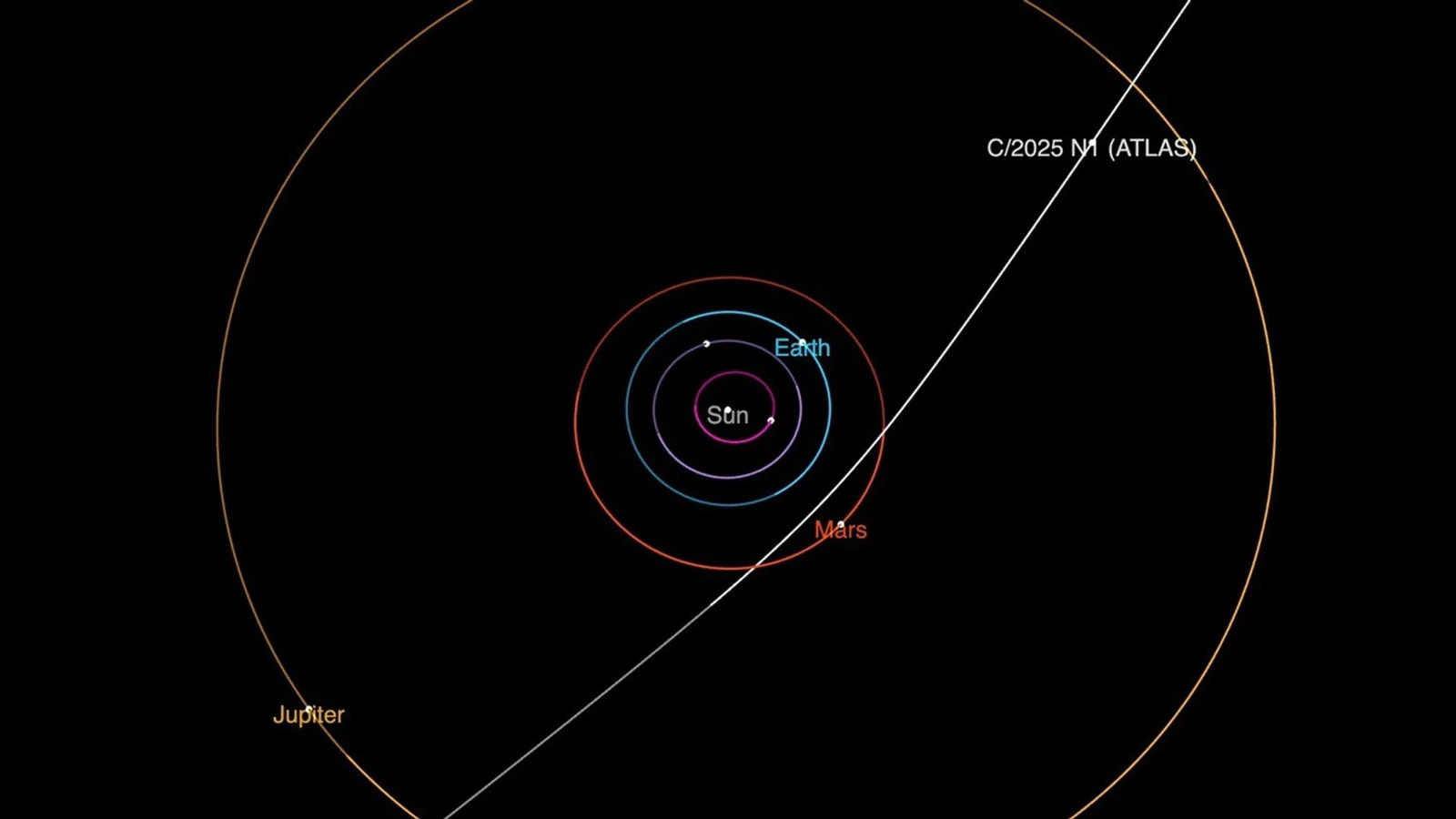
This diagram shows the hyperbolic trajectory of interstellar comet 3I/ATLAS as it passes through the inner solar system. It will make its closest approach to the Sun, just inside the orbit of Mars, in October. (NASA/JPL-Caltech)
No, the remarkable thing about A11pl3Z's path wasn't how close it would come to us. Instead, it was where that path traced back to!
Newly named Comet 3I/ATLAS is now the third interstellar object we've spotted travelling through our solar system!
Previous discoveries
The first interstellar object discovered, 1I/'Oumuamua in October 2017, was only detected after it passed around the Sun and was on its way back out into the galaxy. Analysis of its trajectory showed that it dove into the inner solar system from 'above', at a very steep angle, passed within the orbit of Mercury, and then slingshotted around the Sun to depart in a completely different direction.
There is still some debate about exactly what 'Oumuamua (the Hawaiian word for 'scout') actually was. Observations revealed that it was likely dark red in colour, around 100-200 metres wide, and that it was either shaped like a cigar or a skipping stone, as it tumbled end-over-end passing through the solar system. It wasn't dense enough to be an asteroid, but it didn't behave like a comet, either. To throw some extra mystery into the event, as it departed, it even exhibited a small acceleration that couldn't be easily explained! The most likely answer is that 'Oumuamua was an ancient comet that had lost nearly all of its ice while journeying through the galaxy. However, we still don't know for sure.
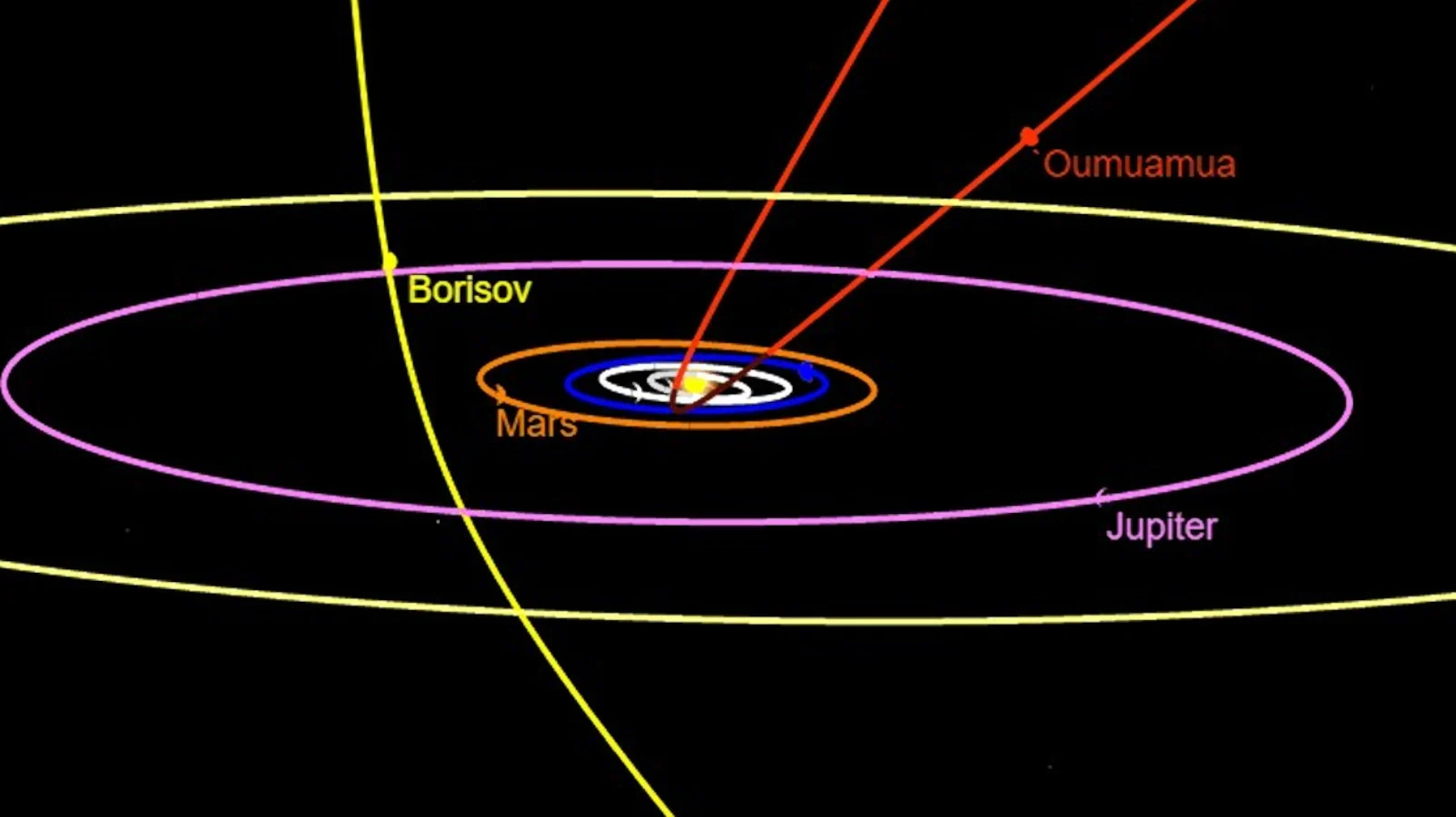
The paths of 'Oumuamua and Borisov through the inner solar system. (Image courtesy Tony873004/Wikimedia Commons (CC BY-SA 4.0))
The second object, 2I/Borisov in August 2019, also came from 'above' the solar system, although along a different trajectory than 'Oumuamua. Detected on its way in, astronomers watched it pass just outside the orbit of Mars before continuing on its way, only slightly deviating from its original path.
Borisov was far less mysterious, as it exhibited all the characteristics we come to expect from comets. It was on the small side, at only around 500 metres across, but it developed a large coma surrounding the nucleus, and it had a wide, puffy tail as it passed by the orbit of Mars. Borisov's speed, trajectory, and odd chemical composition were the only aspects of the object that really set it apart from 'home grown' comets.
3I/ATLAS is (so far) unique
This new interstellar object is quite different from the previous two.
3I/ATLAS is most certainly a comet, like 2I/Borisov. Currently just within the orbit of Jupiter, it is already being heated enough by the Sun's rays that a coma of gases has developed around the nucleus, and it has a short tail as well.
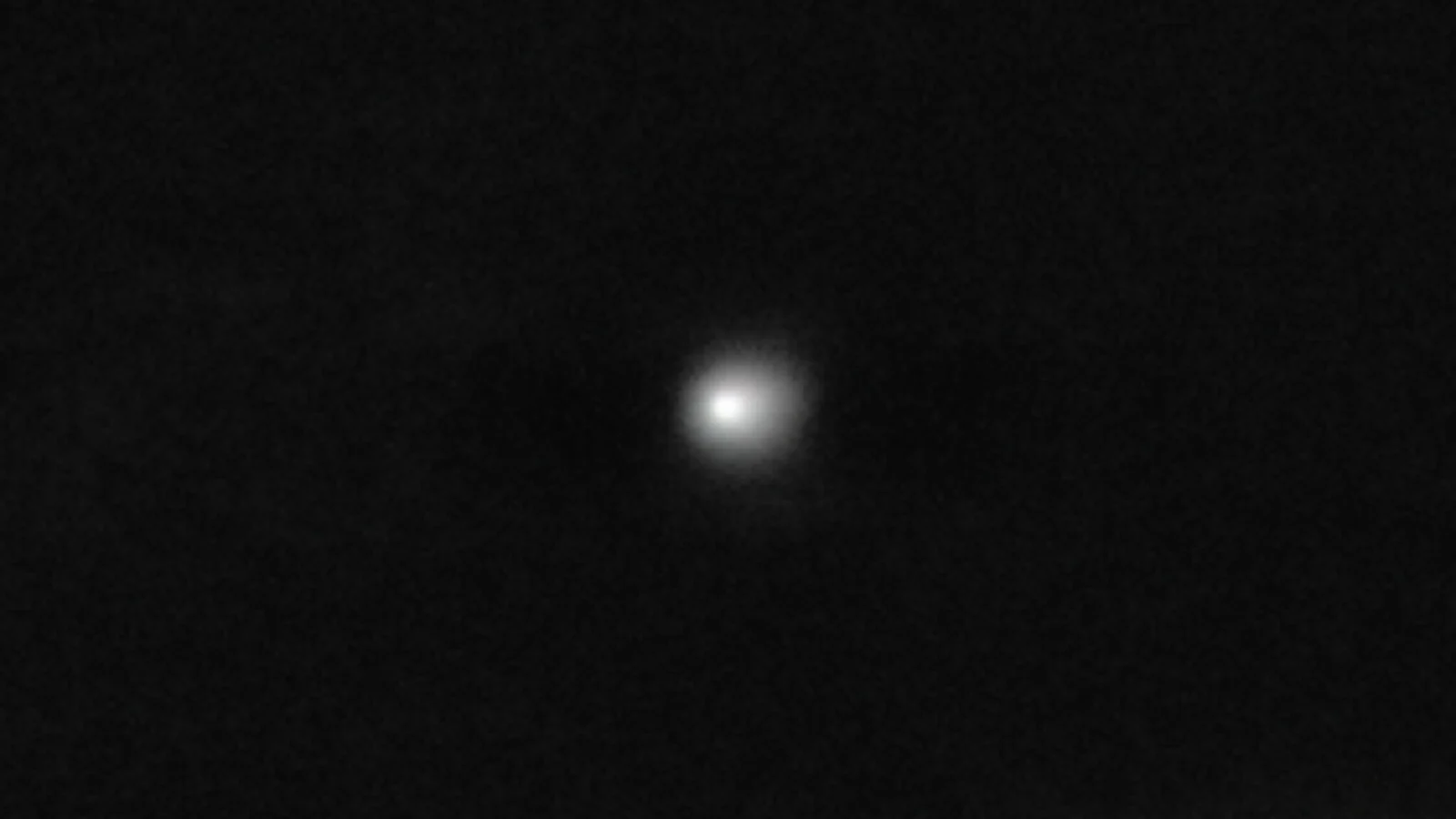
A stacked image of several observations by the ESO's Very Large Telescope is shown here, to augment the brightness of comet 3I ATLAS and bring out more of its details. The solid nucleus of the comet is located within the bright region on the left side of the 'smudge', however it is currently obscured by the gas, ice, and dust of the comet's coma. (ESO/O. Hainaut)
However, that is where the similarities (at least so far) end.
From the comet's brightness, astronomers estimate that 3I/ATLAS's nucleus measures anywhere from 10-20 kilometres across. That makes it the largest interstellar object seen so far — at least 100 times the size of 'Oumuamua and 20 times bigger than Borisov.
It is also the fastest of the three, travelling at nearly 60 kilometres per second, or 216,000 kph, compared to around 32 km/s for Borisov and 26 km/s for 'Oumuamua.
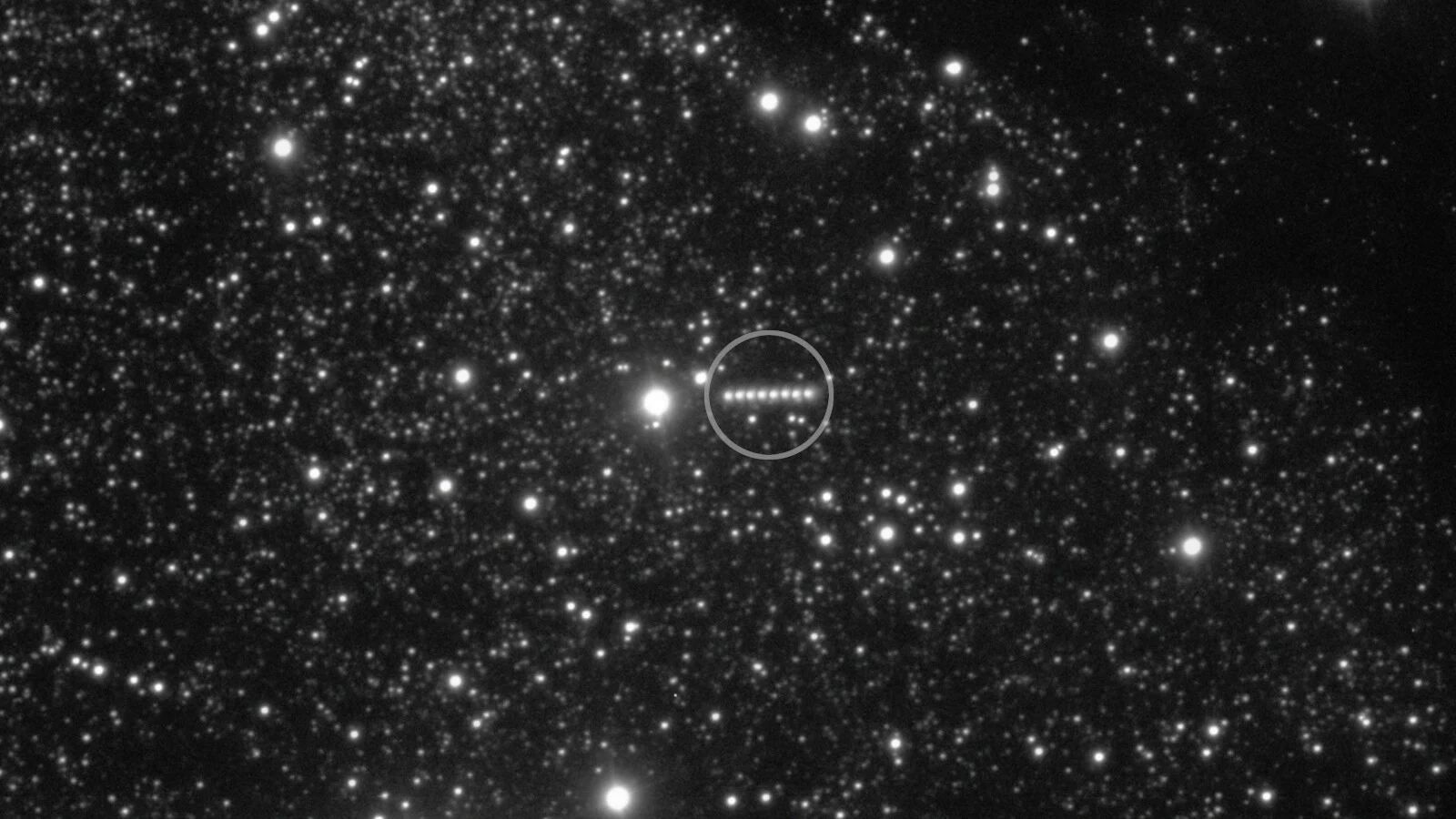
Eight observations of comet 3I/ATLAS are shown here (circled), taken by the ESO's Very Large Telescope over the course of about 13 minutes on the night of July 3, 2025, revealing the movement of the comet against the background stars. (ESO/O. Hainaut)
1I/'Oumuamua and 2I/Borisov both approached us at very steep angles, entering the system from the general direction that the Sun is travelling through the galaxy. 3I/ATLAS, on the other hand, arrived from the direction of the galactic core, and is passing through the solar system at a much more shallow angle, almost perfectly in line with the ecliptic — the disk that the planets orbit along.
Using a computer model based on data collected by the ESA's Gaia telescope, a team of researchers led by Matthew Hopkins of the University of Oxford has proposed that, based on its speed and trajectory, 3I/ATLAS could originate from one of the stars in the Milky Way's thick disk.

This map of the Milky Way galaxy was compiled using data from the Gaia mission. The bright region that spans across the centre of the image is the galactic 'thin disk', while the more diffuse regions above and below that are known as the 'thick disk'. (ESA/Gaia/DPAC; CC BY-SA 3.0 IGO. Acknowledgement: A. Moitinho.)
Based on what Gaia revealed about the stars in that region of the galaxy, this comet may have been ejected from its home star system long before our Sun even formed!
"All non-interstellar comets such as Halley's comet formed with our solar system, so are up to 4.5 billion years old," Hopkins told the Royal Astronomical Society.
"But interstellar visitors have the potential to be far older, and of those known about so far our statistical method suggests that 3I/ATLAS is very likely to be the oldest comet we have ever seen."
Will we see it?
Right now, with the comet still out near the orbit of Jupiter, it can only be seen with the strongest telescopes we have. This will get better over the next couple of months, though.
Throughout July, August, and into September, the comet will grow brighter in our skies as it rises earlier and earlier, and thus tracks farther west each night.
It will likely remain too faint to spot during that time.
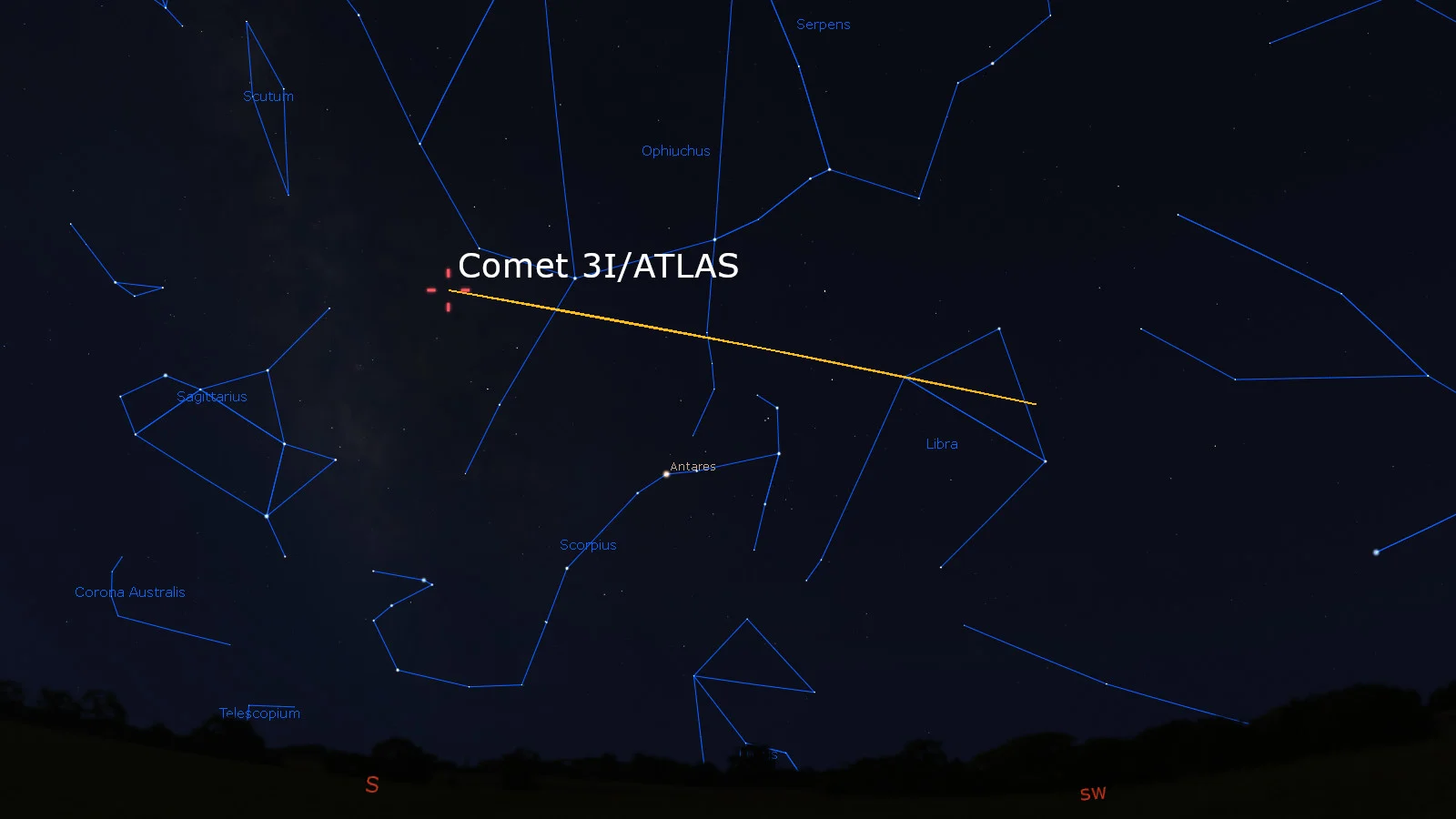
Interstellar comet 3I/ATLAS traces a path across the constellations Ophiuchus, Scorpius, and Libra, between July and September 2025, as shown by the orange line. The comet is now far too dim to see with anything less than an observatory telescope. By the time it reaches the constellation Libra, it might be visible to anyone with a quality backyard telescope. (Stellarium)
In October, the comet will reach its closest point to the Sun. Unfortunately, it will be on the opposite side of the Sun from Earth. While it's blocked from sight here, it will be passing reasonably close to Mars. NASA and ESA orbiters could swing around and snap pictures of it as it flies past, providing us with closer views when it reaches its brightest near perihelion.
3I/ATLAS should reappear in the eastern predawn sky by November. When it does, this is when it should be bright enough — at magnitude 14 or so — for quality backyard telescopes to pick it up.
Even with all of that said, comets are notoriously unpredictable. So, we can't be absolutely sure how 3I/ATLAS will respond as the Sun's rays heat it up. It is likely that it will follow the predictions and remain fairly dim in our skies. However, could there be a chance, however slim, that it will brighten much more significantly, giving us a spectacular show as it passes through and heads back out into interstellar space? Only time will tell.
